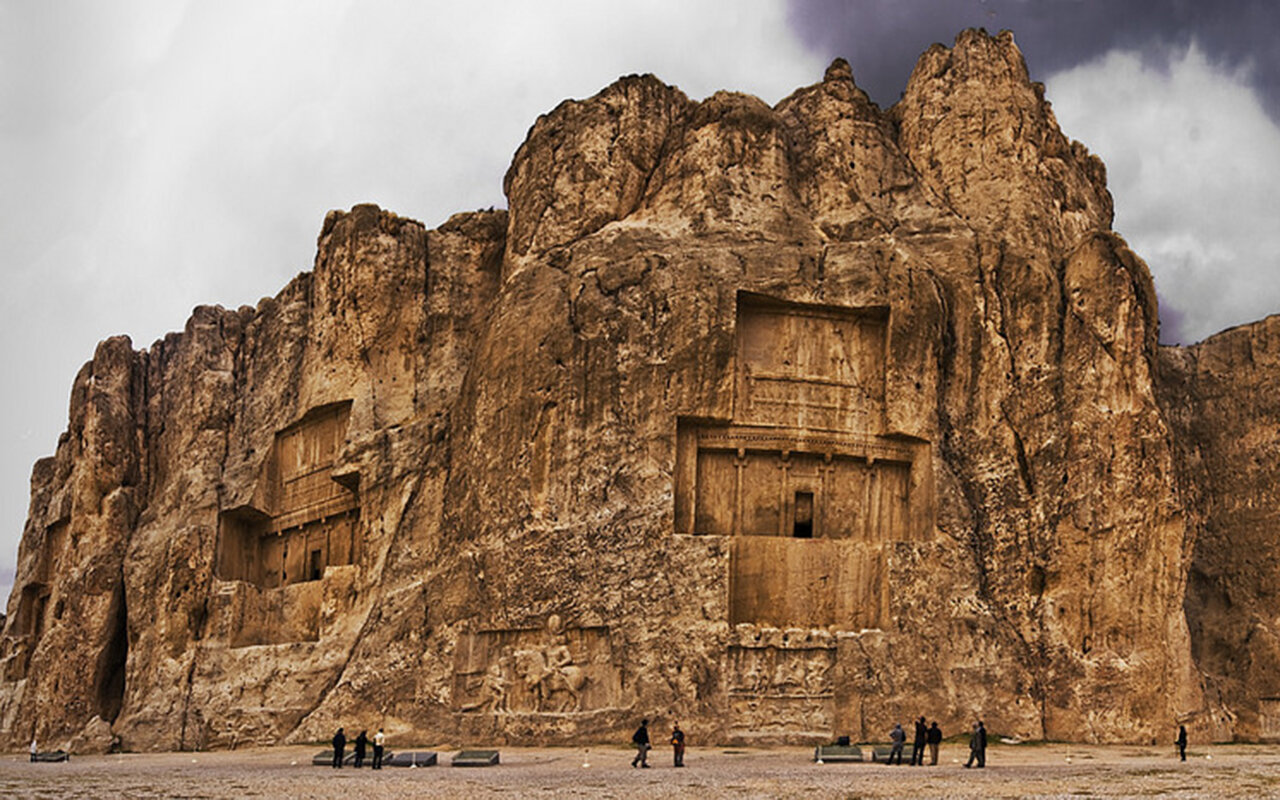Fourth burial inscription identified in Naqsh-e Rostam

TEHRAN—Abolhassan Atabaki, archaeologist and researcher, gave news of discovery of the fourth burial inscription in the area of Naqsh-e Rostam in Marvdasht, Fars province, saying that the inscription is related to an ossuary, a container or repository for the bones of the dead, from the late Sassanid era and has very beautiful decorations.
He told Shabestan news agency that the transformation of burial rituals and methods with the spread of Zoroastrianism in the Iranian plateau had been accompanied by different practices. “Today, archaeological sources provide us with a wide range of these transformations.”
A huge number of ossuaries and other burial structures pertaining to the Sassanid era have been launched near Istakhr city, Takht-e Jamshid, Naqsh-e Rostam and in the birthplace of the Sassanid kings, some of which have inscriptions that pertain to the late Sassanid era.
He explained: “Today, various types of burial methods of Sassanid era have become obvious for us with the help of burial inscriptions.”
Also, Najmeh Ebrahimi, a senior expert of history explained: “Archaeological studies and explorations have changed our approach toward burial methods of Sassanid era.”
The formation of this type of burials was in line with religious teachings, the geography of the environment, government laws and the financial ability of individuals and gradually encompassed a wide range of public culture, she added.
She continued: “Not only the statements of Nezam al-Molk, the Seljuk minister, about the tomb of the city of Rey, but also the epitaph of the daughter of Gabr in Eqlid is evidence of this issue that the amount of 12,000 dirhams was spent on building a stone pit tomb, which was a very high figure at the time. Undoubtedly, erecting a tomb also involved a huge cost that could only be afforded by wealthy people and the upper classes of society.”
She emphasized: “Based on our studies in Marvdasht, the number of ossuaries created in the Sassanid and early Islamic eras is very small compared to the mortar and stone tombs (belonging to ordinary people), which indicates that rare individuals built ossuaries and other luxurious tombs; some of these tombs contain inscriptions about the deceased and prayer sentences that were written by local scribes at the behest of the deceased (before death) or by the survivors.”
Regarding the recently identified inscription, Atabaki said this ossuary includes burial inscription and has beautiful decorations.
The dome-shaped decorations with graphic motifs above it, which are less visible in Sassanid ossuaries, are reminiscent of ascension to the upper world and a view of Sassanid architecture.
The researcher said that the ossuary is written in five lines in Pahlavi script and in a reclining (vertical) form, which is translated as follows: This is the grave of the son of Nikdad. Go to the heaven.
KD
Leave a Comment